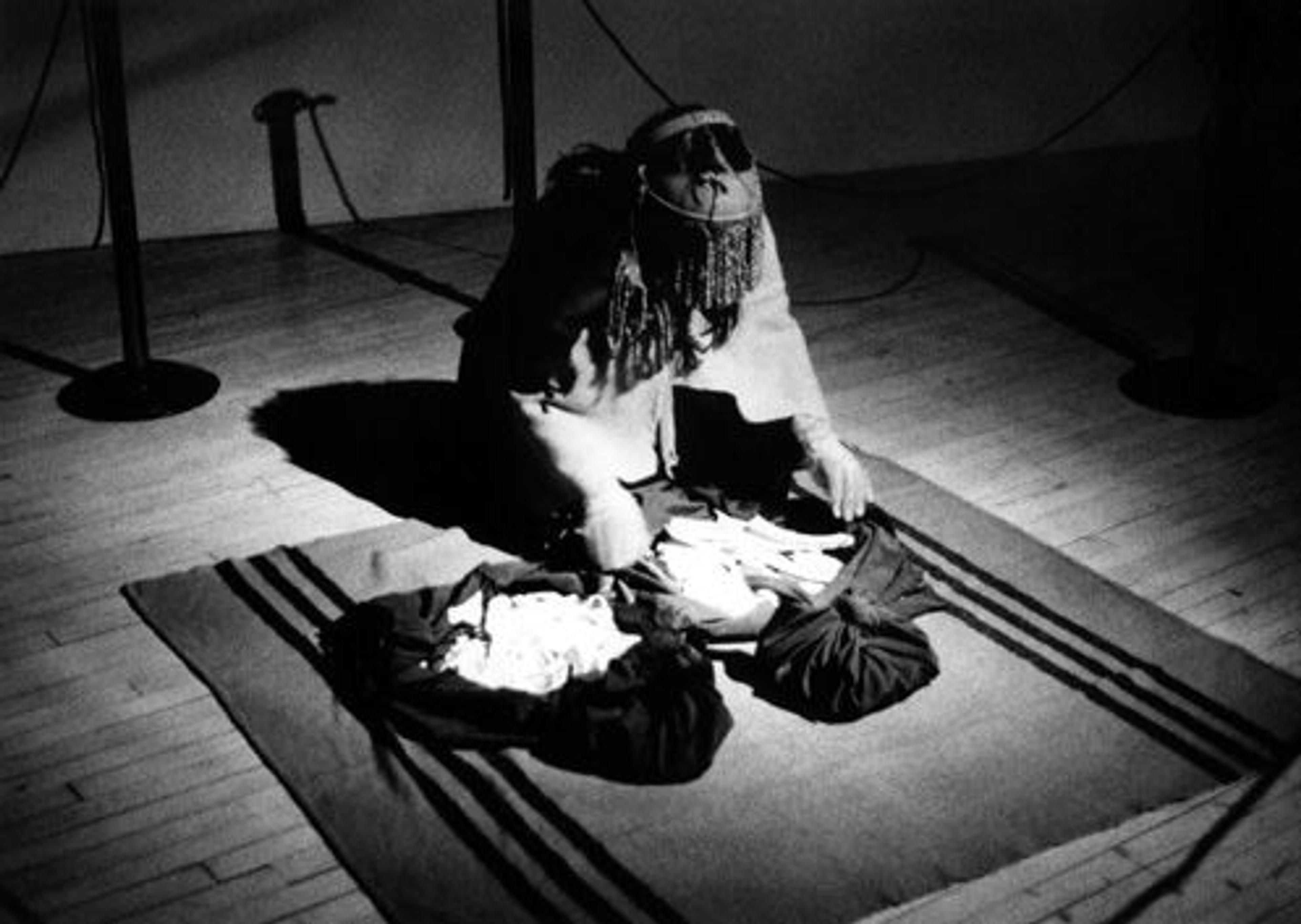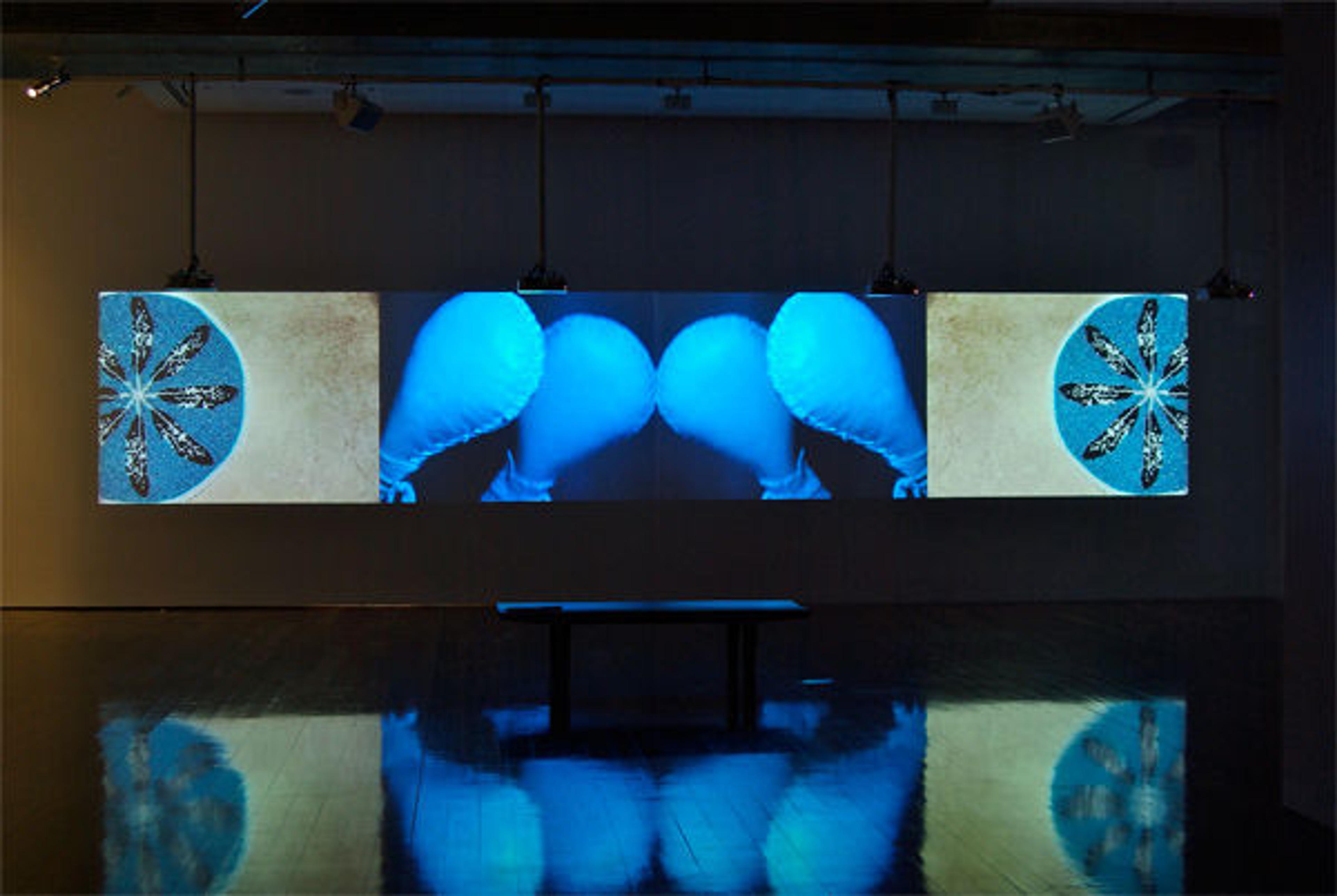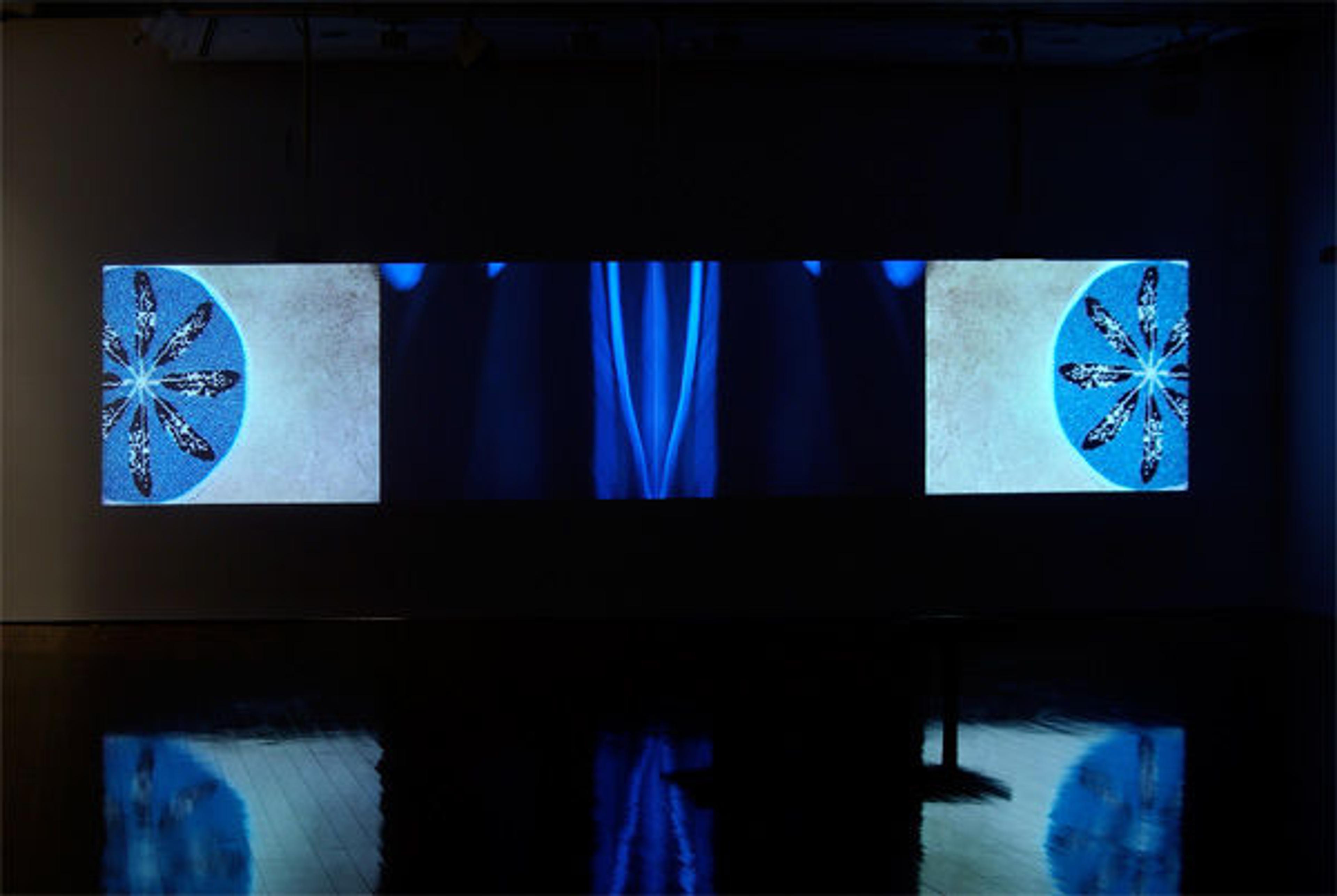
Dana Claxton (Canadian, b. 1959). Momma Has a Pony Girl… (Named History and Sets Her Free), from The Mustang Suite, 2008. Image courtesy of the artist
«This Sunday, March 15, filmmaker, photographer, and performance artist Dana Claxton will present an original piece entitled Fringed, which she created specifically for the Metropolitan Museum in honor of the exhibition The Plains Indians: Artists of Earth and Sky. Claxton's art, which is also represented in the exhibition, expresses reverence for her Lakota heritage and challenges the viewer to engage with Native American identities in contemporary society.»
Claxton was born in Yorkton, Saskatchewan, and her family reserve is Wood Mountain Lakota First Nation. She of Hunkpapa Lakota (Sioux) descent, and her family traces its roots back to the migration of Sitting Bull and his followers from the United States to Canada. Her works have been exhibited at MoMA, the Walker Art Center, the Sundance Film Festival, and the Sydney Biennale (2010), and she is currently an assistant professor in the Department of Art History, Visual Art, and Theory at the University of British Columbia.
In Fringed, Claxton incorporates deer hides, fringe, and antlers with sound and video to explore how Plains cultural belonging and performance art interact with each other or, in Claxton's words, "mix, meld, and mash." In Plains Indians culture, fringe on garments has both practical and spiritual purpose. It sweeps away water, and it moves with the wind, keeping the wearer keenly aware of the connection between his or her body and the elements. Eric Angus and Jamey Braden, two MFA students at the University of British Columbia, will join in this performance.
Claxton is best known for such powerful multimedia works as Buffalo Bone China (1997), Sitting Bull and the Moose Jaw Sioux (2003), and The Mustang Suite (2008). All three contain strong sociopolitical messages about the history of injustice and racism in the lives of Native peoples. Her work also reflects her desire to infuse gallery spaces with elements of her culture as a way to introduce new audiences to Native American and Canadian First Nations history. She aims to draw attention to stories of strife in colonial and postcolonial America in ways that are both provocative and insightful.

Claxton, wearing a fringed head piece, performs Buffalo Bone China. Image courtesy of the artist
Claxton's critically acclaimed audiovisual work Rattle (2003), which debuted in the exhibition Language of Intercession: Native Media and New Media Artists at Dazibao in Quebec, is prominently displayed in the Plains Indians exhibition. Projected on four screens, it is a blend of whirling gesture and provocative audio. Mirrored images include a rattle in motion, accompanied by synthesizers and traditional Peyote song. Rattles in Lakota culture are instruments of healing; at points throughout the film, the screens turn a shade of blue, which refers to the Lakota belief in the healing powers of that color. The mirroring of images that accompanies the rattle performance harks back to Lakota cosmology.

Dana Claxton (Canadian, b. 1959). Rattle, 2003. Canada. Hunkpapa Lakota (Sioux). Four-channel video. Dana Claxton and Winsor Gallery, Vancouver
Rattle is both a visual prayer and a symbolic tale, lending multilayered meanings to traditional Lakota rattle-playing through its use of technology. By sharing a space with Rattle, one can sense the healing powers of the instruments and experience first-hand an aspect of Native American tradition. About her creative intent, Claxton says, "[I] started to move away from machine and into the realm of the spiritual and thought about 'manna' as opposed to hydro, which runs power for the electronic machine, and how rattles have been used since time immemorial to heal people and access manna."

Another view of Rattle, 2003
Like the other works in the Plains Indians exhibition, Rattle connects to a vast cultural heritage that has never before been displayed at this scale within the Met's walls. The exhibition is the culmination of thousands of years of art, culture, and experience, and is presented in a unique space, larger than the confines of a conventional gallery. We invite you to join us this Sunday to see Claxton perform Fringed, which will form part of an afternoon Sunday at the Met program; hear from other contemporary artists; and visit the exhibition.
Event Information
Sunday at the Met—The Plains Indians: Artists of Earth and Sky
Sunday, March 15, 3:00–4:30 p.m.
The Grace Rainey Rogers Auditorium (Show location on map)
Free with Museum admission
Related Link
The Plains Indians: Artists of Earth and Sky (March 9–May 10, 2015)